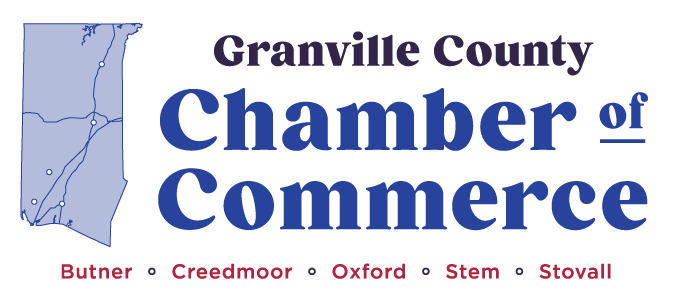Referral Marketing Strategies Every Small Business Should Use
You’ve just launched a new product, closed your biggest sale, or opened a second location. It’s a turning point — and now you need momentum. One of the most effective (and cost-efficient) ways to grow? Activate your current customers as referral engines.
But building a sustainable referral system requires more than luck or occasional requests. Here’s how small business owners can strategically increase customer referrals — and position their brand for long-term visibility, trust, and growth.
?? Turn Customers Into Advocates: The Referral Mindset
Referrals don’t happen by accident. They happen when your business leaves a memorable mark and makes it easy for customers to share their experience.
Start by clarifying:
-
What do you want to be referred for?
-
Who should be doing the referring?
-
How will referrals be tracked, rewarded, or acknowledged?
Platforms like Typeform make it easy to set up sleek referral forms, while tools like Podium help you automate review collection and feedback flows.
?? Strategic Collaborations: Referral Boosters That Scale
An often overlooked approach? Partnering with adjacent local businesses or service providers who serve the same audience. These relationships amplify trust and extend your reach without extra marketing costs.
For example, a yoga studio might partner with a local juice bar or athletic apparel shop. But to avoid confusion or misalignment, it’s wise to set clear expectations. One tool that can help is understanding the concept of MOU (Memorandum of Understanding), a simple agreement that defines who’s doing what, without the formality or legal cost of a contract.
MOUs help partners stay aligned while opening the door to joint promotions, referral incentives, and content swaps — all highly visible ways to cross-pollinate referral flows.
? 7 Referral-Ready Strategies for Small Business Owners
Here’s a checklist-style breakdown of tactics that can be applied across industries:
-
Ask at the right time: After a positive experience — not during onboarding or before results — is when customers are most likely to refer.
-
Incentivize meaningfully: Discounts are great, but also consider exclusive access, charitable donations, or early releases.
-
Use automation: Referral tracking tools like ReferralCandy or GrowSurf can help scale your efforts with minimal overhead.
-
Create shareable moments: Encourage customers to post reviews or social content at milestones. Include a referral link or tag.
-
Build visual assets: Branded QR cards, posters, and testimonial templates (try Venngage for clean, printable formats) can serve as passive referral prompts in-store.
-
Highlight your referrers: Use email shout-outs or website badges to publicly thank those who bring you new business.
-
Bundle referrals into retention programs: Combine referrals with loyalty programs so your best customers have even more reason to advocate.
?? Comparing Referral Channels: What Works Best?
|
Channel Type |
Pros |
Cons |
Best Use Case |
|
Manual Requests |
Personal and trustworthy |
Not scalable |
High-ticket or service-based businesses |
|
Email Campaigns |
Easy to automate and track |
May be ignored if not timed well |
Product-based or seasonal promotions |
|
In-Person Cards |
Great for local visibility |
Harder to track ROI unless digitally integrated |
Brick-and-mortar, events, or pop-up booths |
|
Partner Referrals |
High-trust, opens new markets |
Needs alignment and consistent follow-up |
Adjacent businesses with shared customers |
|
Social Sharing |
Scales organically with the right incentives |
Hard to control messaging or reach |
Consumer brands, experiences, and creators |
? Frequently Asked Questions (FAQ)
Should I offer cash for referrals?
Sometimes, but for small businesses, non-cash rewards (discounts, upgrades, or exclusive access) often feel more authentic and sustainable.
How do I avoid asking too soon?
Build referral asks into your customer journey — ideally after a clear value or success milestone is reached.
What if someone refers but doesn’t become a customer?
You can still reward the referrer with a “thank you” or lower-tier perk. Remember that recognition helps build goodwill.
Can I track referrals from offline interactions?
Yes. Use referral codes, QR cards, or printed coupons that tie back to the original customer or promoter.
Do I need a full referral platform to start?
Not necessarily. Start simple — a Google Form or Airtable link with manual follow-up can still be effective.
?? Product Spotlight: Alignable for Local Referral Loops
If you’re focused on hyperlocal or neighborhood-based marketing, Alignable offers a unique community platform where small business owners refer one another. It’s designed specifically for building local trust networks — and works well for service providers, consultants, and retailers looking to grow regionally.
? Turn Customers Into Growth Channels
Referral programs aren’t about asking louder — they’re about asking smarter.
By aligning with other businesses, crafting structured opportunities for sharing, and respecting the timing of each ask, you position your business to grow organically. Use tools like Typeform, GrowSurf, or even content-focused solutions like Ghost.org (for newsletters and reward-based referrals) to support your flow — but always lead with clarity and customer alignment.
The best referrals feel effortless to give and natural to share. Design your systems with that in mind — and let your customers become your most powerful marketers.
Discover the vibrant business community in Granville by visiting the Granville Chamber of Commerce and unlock opportunities for growth and collaboration!

